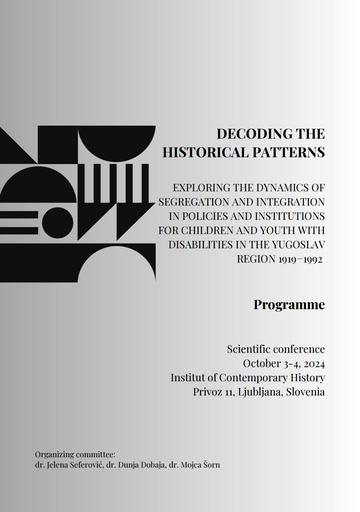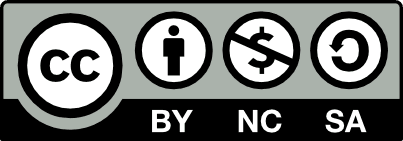/
Dogodki
/
Konference
Implementation of standards and implementation of educational programs for children with sensory disabilities in severe economic conditions in the 1980s in Slovenia


To delo avtorja Marta Rendla je ponujeno pod Creative Commons Priznanje avtorstva-Nekomercialno-Deljenje pod enakimi pogoji 4.0 Mednarodna
Datoteke (1)
Opis
In the 1980s, it was typical for socially important public services, including schools and education, that there were no cutbacks in the implementation of programs, especially guaranteed programs, despite significantly reduced funding. On the contrary, in the area of primary education, some conditions for high-quality educational work were improved, but this did not necessarily mean an improvement in the quality of the learning process. For example, the training structure of teachers has improved, the number of students in the department and the number of students per teacher has decreased. All these indicators pointing to positive developments are, of course, the result of complex social processes. The aim of this article is to shed light on exactly how, under generally difficult economic conditions, it has been possible to maintain educational programs with the reduction in funding for the Ministry of Education and, consequently, for the specialized special schools. In addition to sociological and anthropological works dealing with the problems of children with sensory disabilities, I will use archival material as basic material (Materials of the Educational Community of Slovenia with Special Educational Communities, 1974-1989, Materials of the Association of the Deaf and Hard of Hearing of Slovenia, 1931-2003, Sub-fund: General Department and Investment Office of the Ministry of Education, Science and Sport of the Republic of Slovenia, 1967-2004, Materials of the Institute for Blind and Visually Impaired Youth Ljubljana, 1919-1984). From the Institute for the Deaf and Hard of Hearing in Ljubljana I will try for a while.
Metapodatki (12)
- identifikatorhttps://hdl.handle.net/11686/71084
- naslov
- Implementation of standards and implementation of educational programs for children with sensory disabilities in severe economic conditions in the 1980s in Slovenia
- avtor
- Marta Rendla
- soavtor
- Darja Zaviršek (mod.)
- predmet
- senzorične motnje
- otroci
- Izobraževanje
- Slovenija
- opis
- In the 1980s, it was typical for socially important public services, including schools and education, that there were no cutbacks in the implementation of programs, especially guaranteed programs, despite significantly reduced funding. On the contrary, in the area of primary education, some conditions for high-quality educational work were improved, but this did not necessarily mean an improvement in the quality of the learning process. For example, the training structure of teachers has improved, the number of students in the department and the number of students per teacher has decreased. All these indicators pointing to positive developments are, of course, the result of complex social processes. The aim of this article is to shed light on exactly how, under generally difficult economic conditions, it has been possible to maintain educational programs with the reduction in funding for the Ministry of Education and, consequently, for the specialized special schools. In addition to sociological and anthropological works dealing with the problems of children with sensory disabilities, I will use archival material as basic material (Materials of the Educational Community of Slovenia with Special Educational Communities, 1974-1989, Materials of the Association of the Deaf and Hard of Hearing of Slovenia, 1931-2003, Sub-fund: General Department and Investment Office of the Ministry of Education, Science and Sport of the Republic of Slovenia, 1967-2004, Materials of the Institute for Blind and Visually Impaired Youth Ljubljana, 1919-1984). From the Institute for the Deaf and Hard of Hearing in Ljubljana I will try for a while.
- založnik
- Inštitut za novejšo zgodovino
- datum
- 03. 10. 2024
- tip
- video
- jezik
- Angleščina
- jeDelOd
- pravice
- licenca: ccByNcSa
